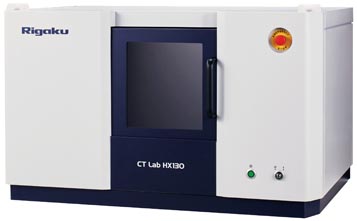BOTTLECAP AIR GAP ANALYSIS
About the sample: Bottlecaps
Screw bottlecaps are used everywhere, from soda bottles, detergent containers, to containers of toxic chemicals. They can be made of plastics or metals. While soda leaking in your cooler might not be a big deal, many containers leaking during shipping can be a problem. Or, even a small leak can cause tremendous damage when it comes to toxic chemicals. One way to test if a bottle has a leak or there are any design issues is to put the bottle upside down and see if the liquid inside leaks. A better way to investigate this is to use X-ray CT (computed tomography). X-ray CT can scan a closed bottlecap and visualize the air gap between the cap and the bottle. The results provide a quantitative analysis of the air gap width and contact surface.
Analysis procedure
- In this example, a plastic bottlecap was scanned using a micro-CT scanner, CT Lab HX.
- The external and internal surfaces were detected using the ISO-50 surface determination technique.
- The air gap thickness and the strain caused by closing the cap were analyzed.
1. CT scan
A plastic bottlecap was scanned to produce the 3D grayscale CT image. The gray level represents the material density. Air appears black. The medium gray is the polypropylene bottlecap and the light gray is the polyethylene terephthalate bottle.
2. Surface detection
The external and internal surfaces were detected using the ISO-50 surface determination technique.
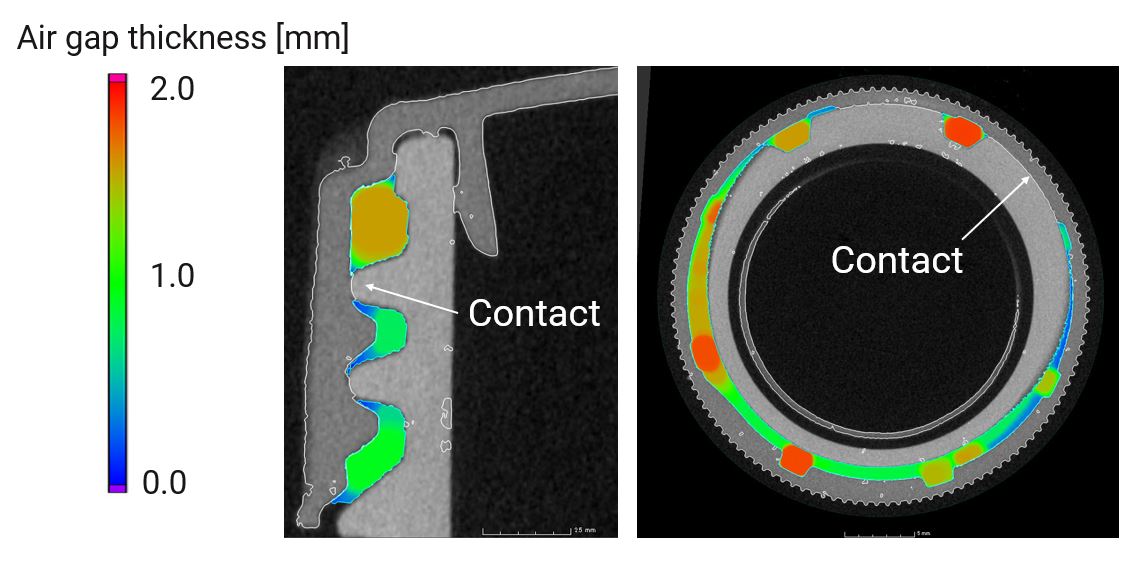
3. Air gap and strain analysis
The air gap thickness between the bottlecap and the bottle surfaces was analyzed and color-coded for zero (contact, blue) to 2 mm gap (red). You can investigate if there is enough contact surface between two parts using this technique.
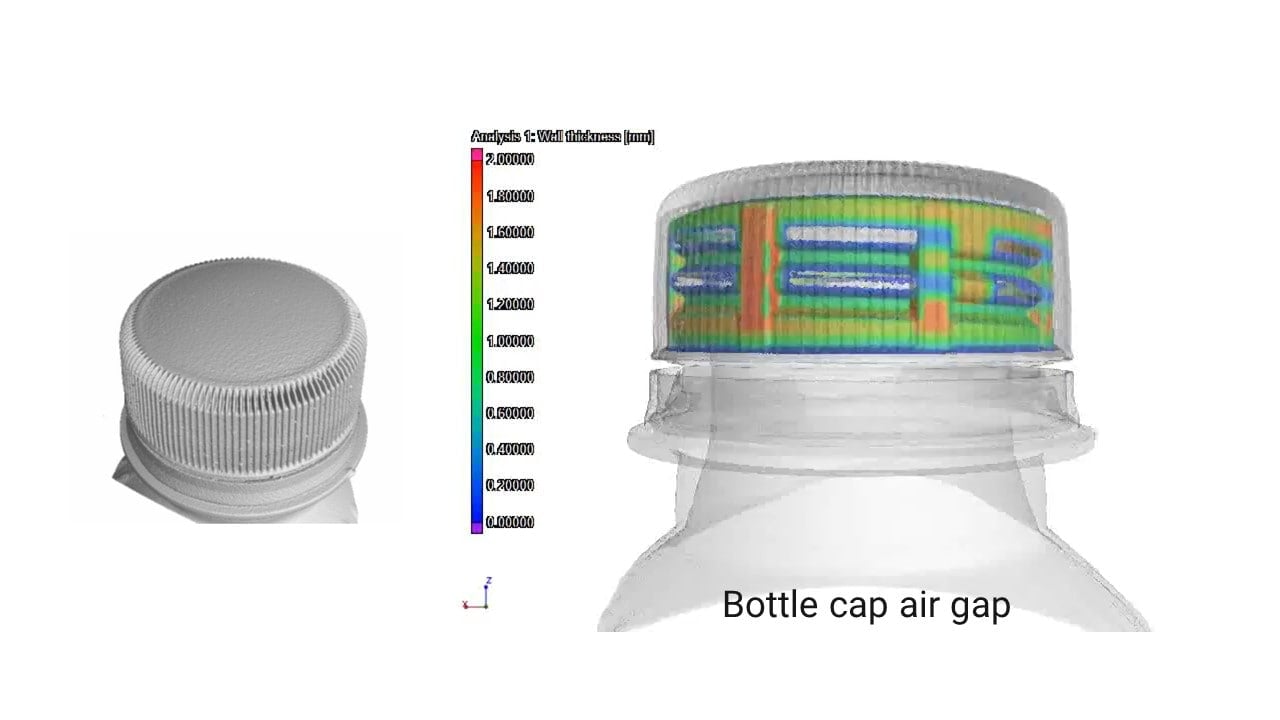
The same bottle cap was scanned in the open and closed states. By comparing their shapes, you can visualize the change in the shape that occurs when the cap is closed. The figure shows the shape change as "open state" - "closed state." Red areas at the top center of the cap and blue and purple areas around the edge indicate that the bottle top center was raised and the edges were pressed down when the cap was closed.
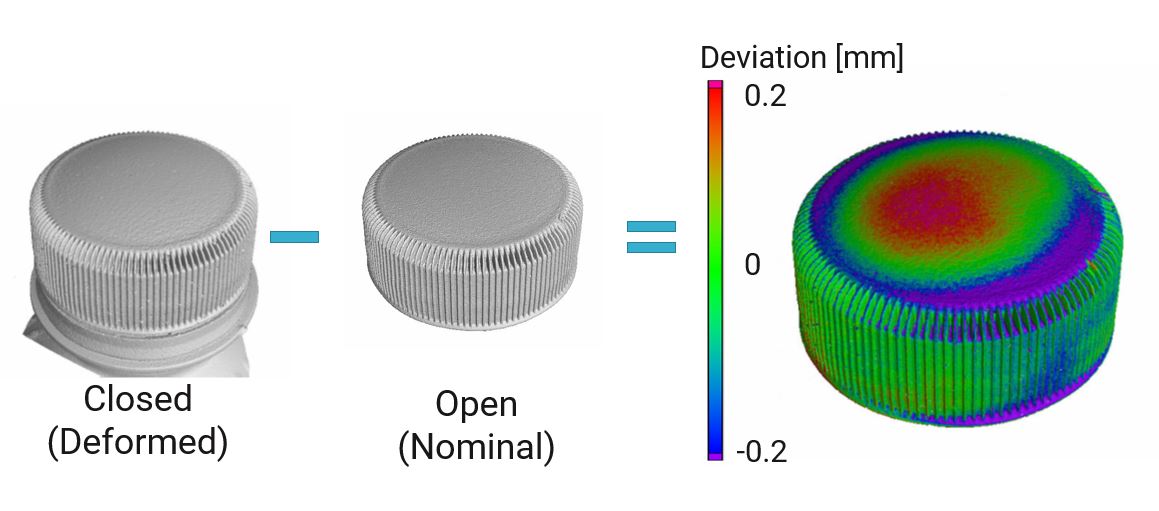
Extra: 3D rendering of the air gap
X-ray CT allows you to see the air gap between the cap and the bottle without altering the object. This is a great technique to study contact between two objects.
More Metrology Application Examples
Watch an on-demand webinar about X-ray CT metrology applications.

Bottlecap air gap analysis
Application Note
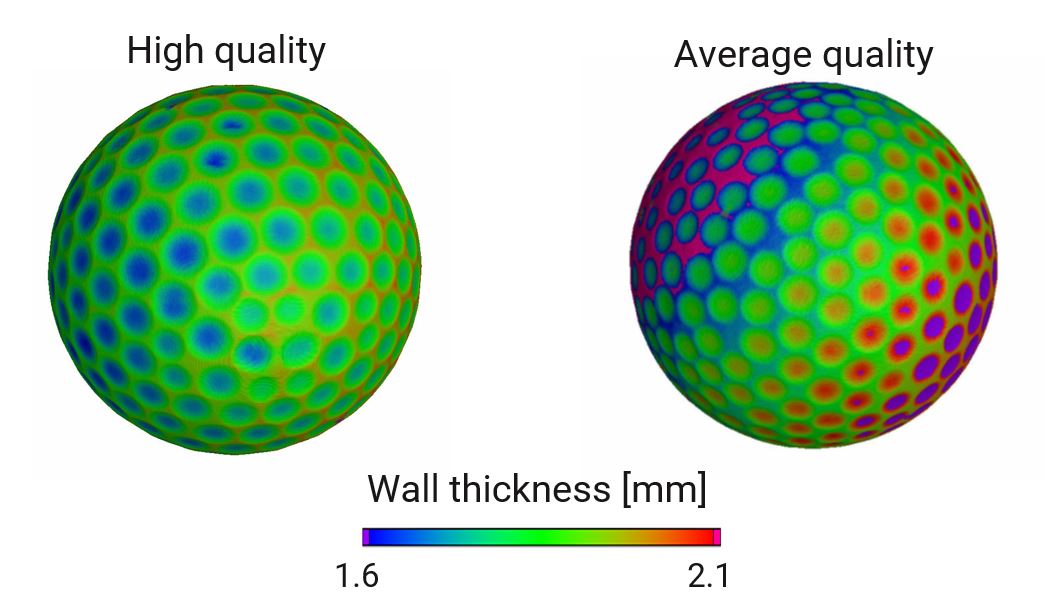
Golf ball layer thickness analysis
Application Note
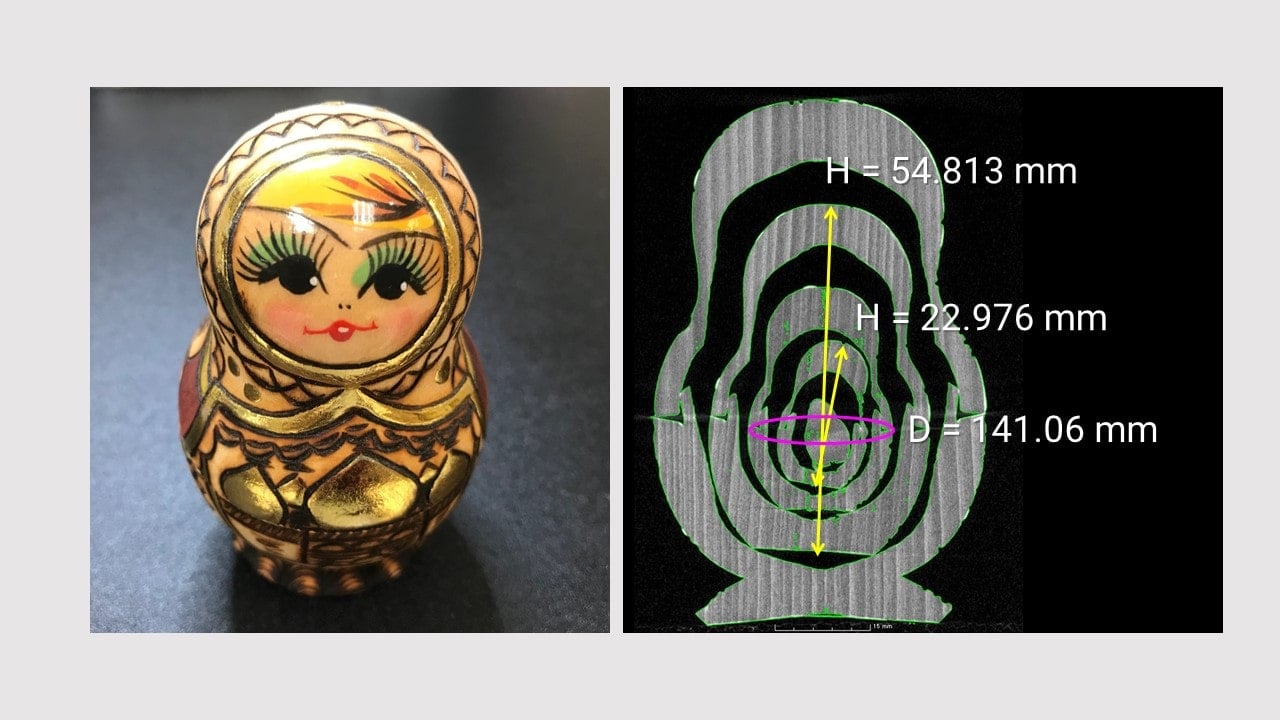
Nesting doll dimensional analysis
Application Note
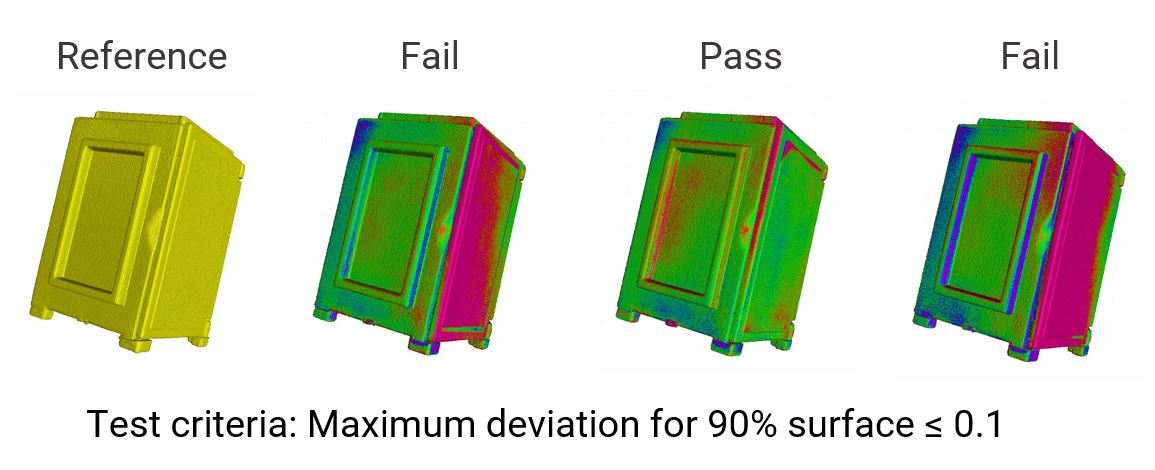
Plastic parts quality control and reverse engineering
Application Note
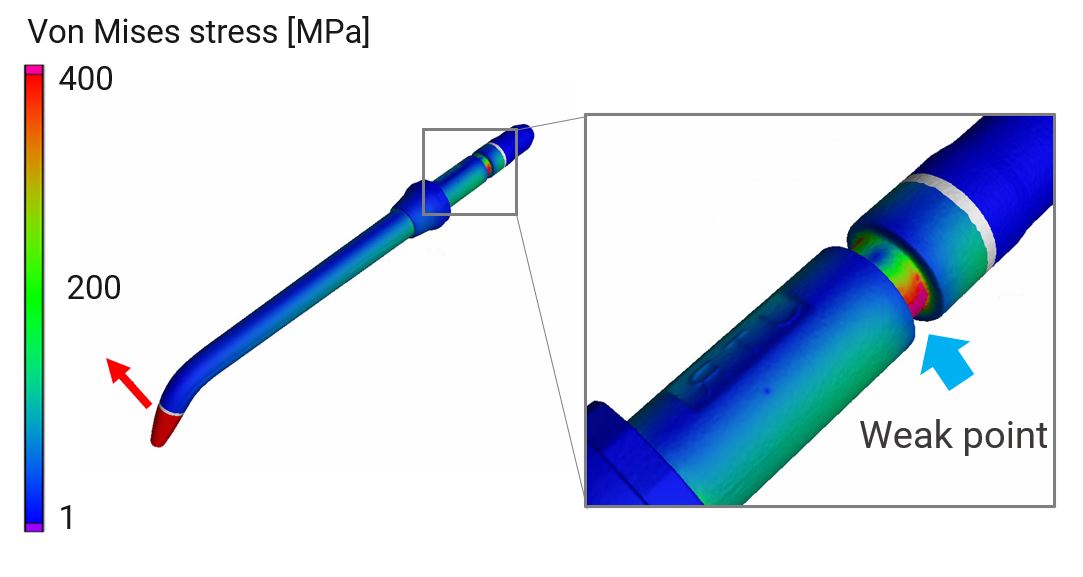
Water flosser tip stress simulation
Application Note
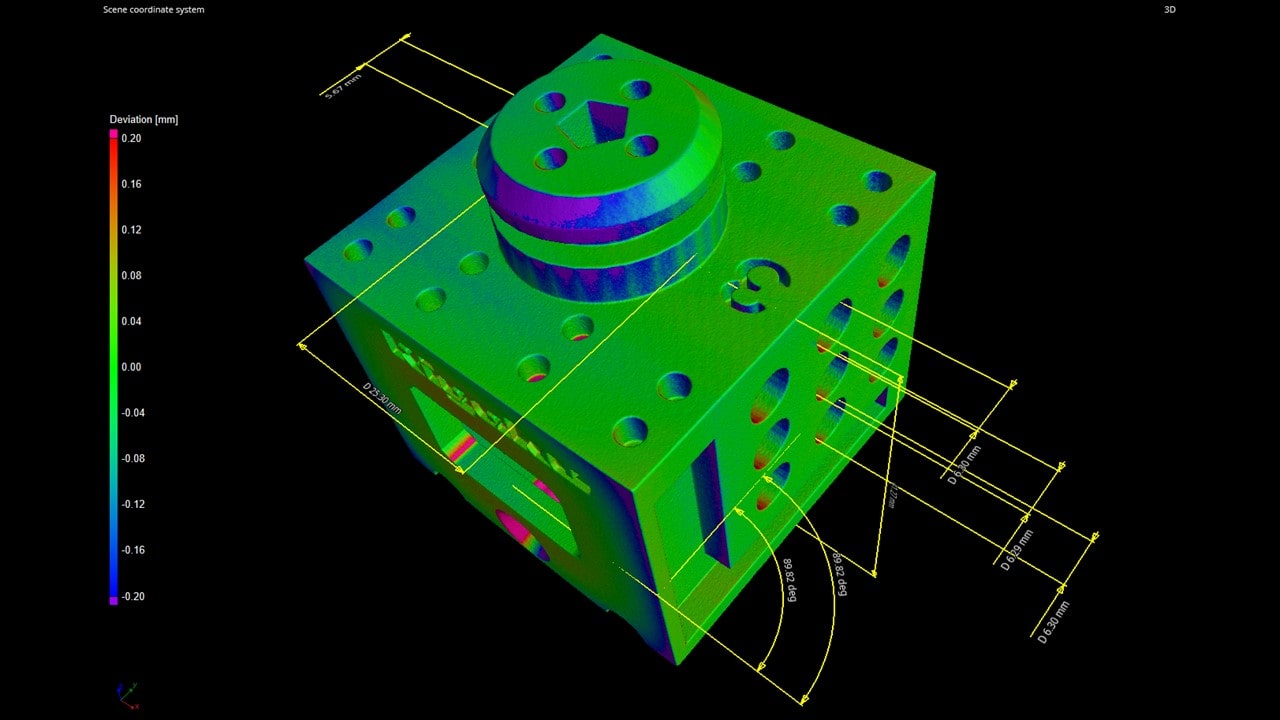
3D printed plastic dimensional analysis
Application Note
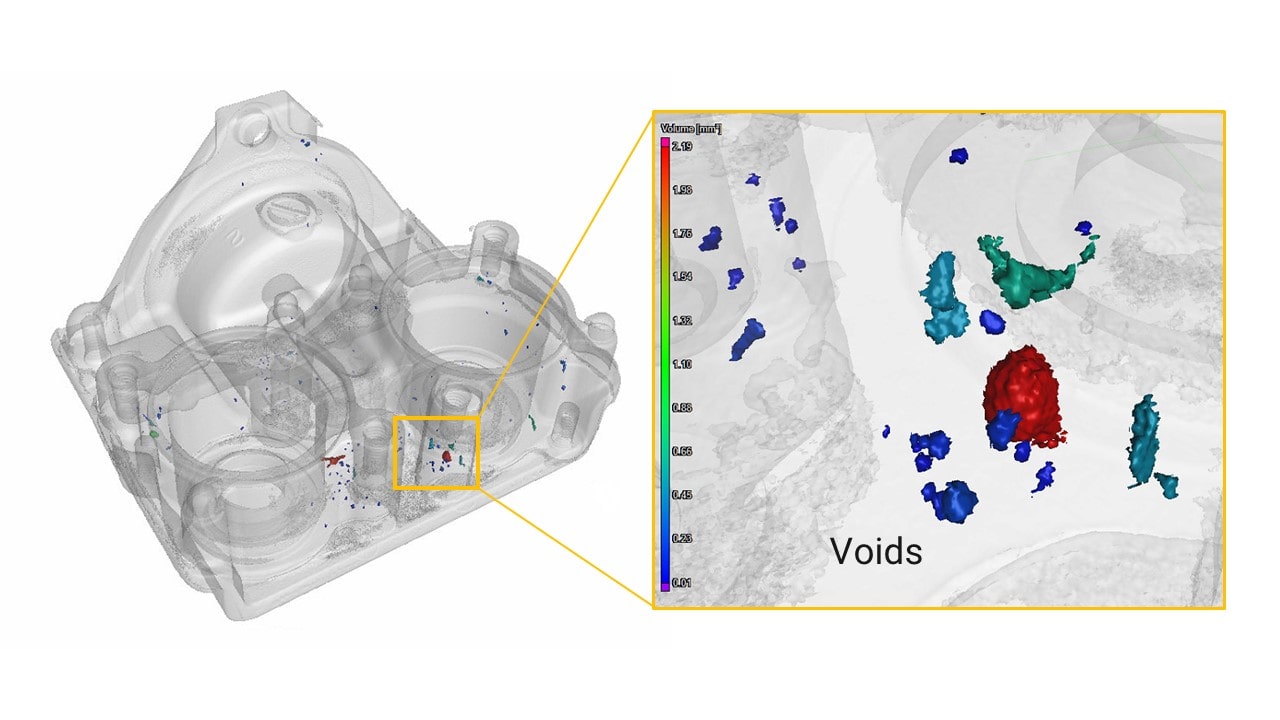
Aluminum die casting void analysis
Application Note
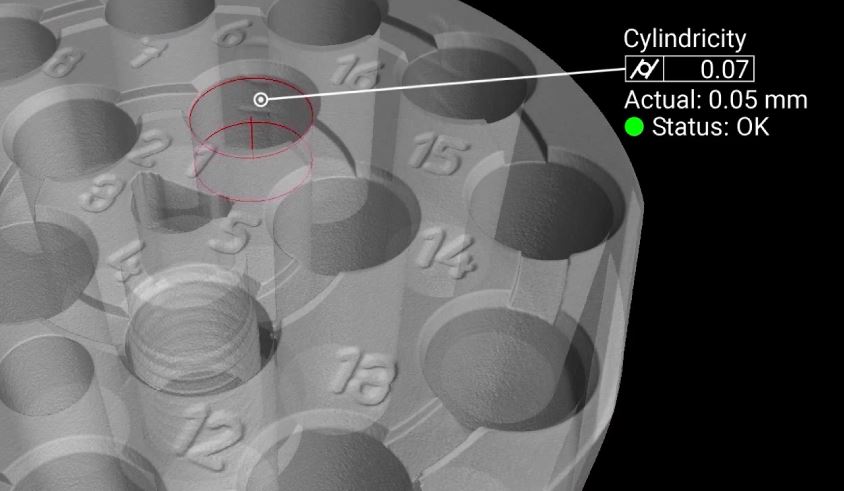
Aluminum part dimensional analysis
Application Note & Video

Plastic Locking Parts Dimensional Comparison
Application Note


